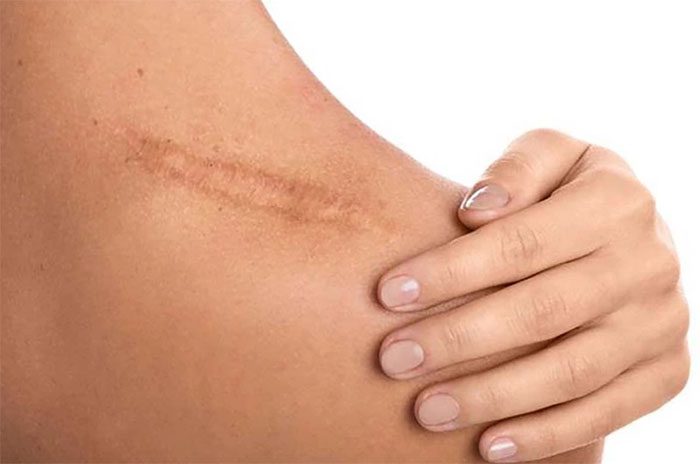To minimize scarring, it is essential to keep the wound clean, moisturize, use dressings, follow treatment protocols, and protect the wound from sun exposure after it has healed.
How to Care for Wounds to Minimize Scar Formation
According to Dr. Lâm Nguyễn Trúc Khuê from the Dermatology Department of Ho Chi Minh City Dermatology Hospital, when skin is injured due to accidents or surgery, the healing process is initiated to repair the wound. Scars may appear after the skin has healed.
The formation of scars depends on the body’s healing process. Surgical scars or scars in joint areas like the knees and elbows are more common, while scars from minor cuts or abrasions are often faint and hard to notice if the wound is properly cared for at home.

The formation of scars depends on the body’s healing process.
Keep the Wound Clean
Clean the area of the wound with a gentle soap or water to remove foreign objects and bacteria.
Moisturize
Moisturize the wound with petroleum jelly to enhance the healing process. This helps prevent the wound from drying out and reduces scabbing, allowing for quicker healing.
Moisturizing also helps alleviate itchiness and prevents the scar from becoming too prominent. There is no need to apply antibiotic ointment if the wound is cleaned daily.
Use Dressings
Use a dressing to cover the wound after cleaning and moisturizing. For larger abrasions, swelling, burns, or persistent redness, silicone or hydrogel dressings can be used.
Change the dressing daily to ensure the wound remains clean. If the skin is sensitive to adhesive, non-stick gauze or paper tape can be used instead. If you are using silicone gel or hydrogel dressings, follow the instructions provided on the packaging for changing them.
Follow Treatment Protocols
If the wound has stitches, it is crucial to follow the doctor’s instructions regarding wound care and the timing for stitch removal to reduce the likelihood of scarring.
Protect the Wound from Sun Exposure After Healing
Sun protection helps reduce pigmentation irregularities (such as redness or darkening) and promotes faster fading of scars. Choose a broad-spectrum sunscreen with an SPF of 30 or higher and reapply regularly.
For minor cuts or abrasions, reducing the risk of scarring can be achieved through appropriate home care. However, if the wound is deep, painful, or infected, you need to seek medical attention.


















































